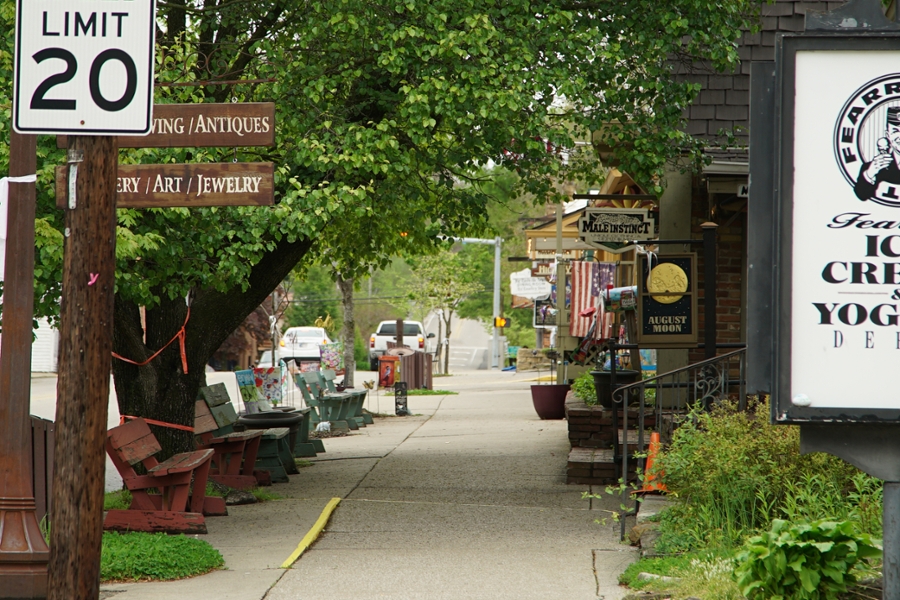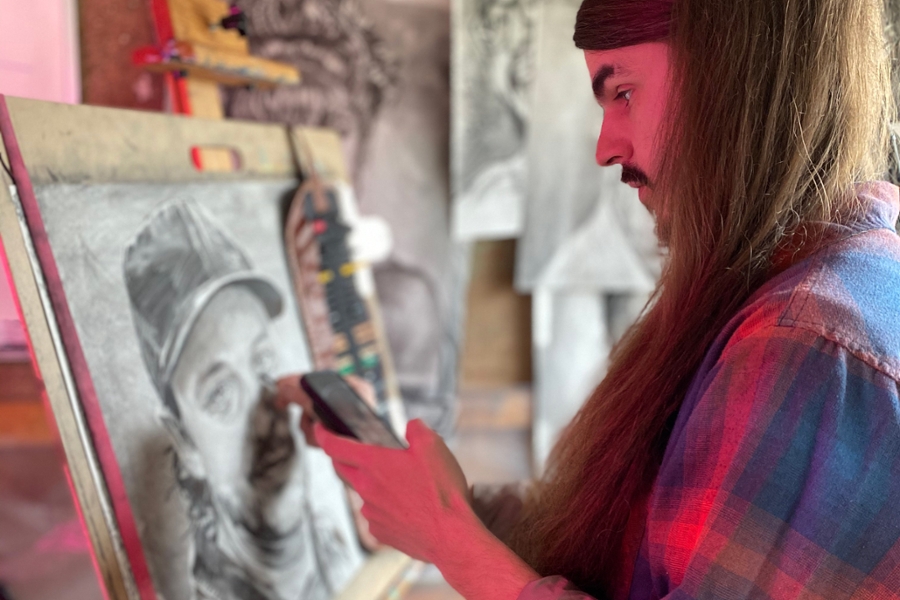They say Rome wasn’t built in a day. Neither was Rome Reborn. The new virtual reality experience from Bloomington-based Flyover Zone Productions builds on centuries of literature and sculpture, all to bring the ancient metropolis about an inch from your eyes.
“Together with a very talented team, we’ve taken Ancient Rome and we’ve reconstructed certain areas of it in 3D. Then we take those reconstructions and put them into virtual reality,” said Nathanael Tavares, CEO of Flyover Zone Productions.
Unveiled back in November 2018, Rome Reborn is a close-up tour of the city’s most iconic locales, circa 320 A.D. Virtual reality allows users to take in the scale of massive Roman architecture, get some context on the sites’ history, then see how these places have turned into the ruins we know today.
Tavares, who spends his non-virtual reality studying computer science at Indiana University, has been with the project since 2016. He says that at any one time, between five and 10 people are on the Rome Reborn team, though many more have had their hands on the project in the past.
The team is led by Dr. Bernard Frischer. If that name sounds familiar, it’s because he’s the informatics professor at IU who recently led another group in digitizing sculptures at the Uffizi Gallery in Florence, Italy.
Rome Reborn currently has three modules available for virtual reality kits big and small, as well as two-dimensional versions for viewing on standard computers. “Flight Over Ancient Rome” acts as an introduction to the project, giving the user a bird’s-eye view of the city. “The Roman Forum” and “The Basilica of Maxentius” bring you to ground level to get familiar with some of Rome’s more notable sites.
In each module, you can teleport to different points on a map of Rome; then, you’re given a full, 360-degree view of the site. And the “Time Warp” feature fades your view between the digital recreation of the past and a photo of the present. It’s all tied together with historical commentary from Dr. Frischer.
“[Rome] is not a city that everyone can just fly to and actually get to experience. With these situations, we are taking Rome and bringing it to people,” Tavares said. “The applications themselves are several dollars, so it’s not like you need to buy a $1,500 airfare ticket.”
While recreating the city in virtual reality has been a gargantuan undertaking, Frischer says the practice of recreating Rome has been happening since Flavio Biondo wrote the systematic study of Rome’s ruins called De Roma instaurata, or Rome Restored, in the 15th century.
“Every century since then,” Frischer said, “somebody has come along and has exploited a new medium of expression and communication to do the same basic thing that Flavio was doing.”
As Frischer explains in the clip below, Rome has been revisited through literature, then images, then physical models.
Cut to more modern times – in 1974, Frischer attended the American Academy in Rome. During a tour of the now-shuttered Museum of Roman Civilization, he saw Italo Gismondi’s miniaturized model of Rome in the time of Constantine. At the museum, it was viewable only from a raised platform surrounding the model; that would later inspire Rome Reborn’s VR hot air balloon flight.
 A photo of Italo Gismondi's model of Rome in the time of Constantine. (Photo: Wikimedia Commons)
A photo of Italo Gismondi's model of Rome in the time of Constantine. (Photo: Wikimedia Commons)
After his experience with the model, Frischer would spend years after working alongside people like computer scientist Alan Kay, computational photography pioneer Marc Levoy, engineer Gabriele Guidi and digital modeler Pascal Mueller to make it more accessible to the world at large.
The evolution of the project over the past 22 years goes largely hand-in-hand with constantly changing technology. Frischer says Rome Reborn was initially thought of as a kind of Google Street View for Gismondi’s miniature model, using close-up photography; that was later reworked to incorporate laser scanning alongside Guidi, but even that had its problems.
“When you scaled up the physical model from 1:250 to 1:1 …all the defects of the model came to the fore,” Frischer said. “Also, they had never dusted the monument, so they had little dust balls, which, when you blow up 250 times, look ridiculous.”
Mueller introduced Frischer to procedural city modeling, which he was testing on Manhattan at the time. That approach replaced the 3D scans and could later be remastered using newer tech and optimized for VR.
Tavares says the tech is much more plug-and-play these days. Rome Reborn now runs on Unity, the game engine behind Cuphead, Inside and Hearthstone, with some help from 3ds Max for modeling and Reality Capture for photogrammetry. And VR is way more accessible to consumers now than it was in the 90s, when a VR rig would run you upwards of $150,000.
In all, Frischer estimates that Rome Reborn has cost approximately $3 million since its inception in 1996. Much of the difficulty in maintaining funding has come from supporters losing interest in such a long-term product. But he’s optimistic that an international client base and future modules will help support the project.
“If it’s any good and it’s responding to a real human need, it will be able to pay its own way,” Frischer said. “The only reason we’re charging is for sustainability.”
 A screenshot from Rome Reborn's recreation of the Pantheon plaza. (Image: Flyover Zone Productions)
A screenshot from Rome Reborn's recreation of the Pantheon plaza. (Image: Flyover Zone Productions)
If the money and resources are there, the Rome Reborn team already has big ideas of where to go with it next. Frischer says they’ve secured funding for a program on Baalbek, with another possibly on Pompeii. And Tavares noted that they’re exploring the possibility of the other two Pillars of Western Civilization: Athens and Jerusalem.
“You have to get contracts, you have to get permits, you have to be very legal and talk to all the right people,” Tavares said. “We’re slowly trying to get that set up with Athens.”
One of Frischer’s ultimate goals is to create a truly immersive experience, to have an interconnected open world where multiple players can freely wander the virtual environment and interact with non-player characters to learn more about the past.
“That’s the idea: Make history something you can study by taking virtual field trips…and interact with NPCs who are your cultural informants. And I want to see that done all over the world,” Frischer said.
While computer processing power and development costs catch up to that vision, Rome Reborn is now available in its current iteration at RomeReborn.org. It runs on Oculus Rift, Oculus Go, Samsung GearVR, HTC Vive, Mac and PC.
Featured image courtesy of Flyover Zone Productions.




